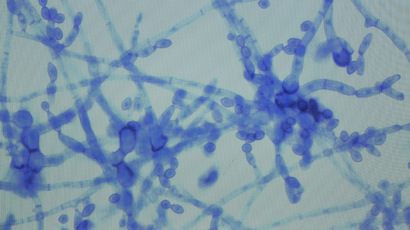Early diagnosis: Revolutionary study says most cancers can now be predicted years in advance

Following a 13-year study, US scientists have identified a specific pattern of change in the length of a biomarker present in cells, which occurs many years before a patient begins suffering symptoms of cancer.
A joint team from Harvard and Northwestern monitored 792 initially cancer-free people for the period, 135 of who were eventually diagnosed with various forms of the illness. In those years, they constantly monitored their telomeres.
Telomeres serve as a protective cap on the ends of chromosomes. As people age, and their cells replicate more and more times, the telomeres grow shorter, until eventually the cell cannot be multiplied again, and simply dies. They can be both an indicator of ageing – a sort of internal body clock - and a cause of it, as cells with worn-down telomeres can malfunction, causing a range of age-related diseases.
Telomere shortening is involved inthe aging process on a cellular level Telomere length represents our biological age pic.twitter.com/fFAJyxdfUp
— beYouthful (@beYouthful247) February 16, 2015
Those who were eventually diagnosed with cancer saw their telomeres depleted alarmingly many years before it actually developed – with some future patients having telomeres that are typical for a person 15 years older.
Some of this catastrophic shortening could be predicted and diagnosed externally – for example simply by looking at patients who already suffering from inflammations, oxidative stress and other conditions that age their cells at a rapid rate. But in other people, who appeared to have few external risk factors for cancer, measuring this rate could produce a revelatory diagnosis.
READ MORE: New technique fights aging, extends life of cultured human cells
But this is not the most surprising part of the study.
Suddenly, three to four years before the diagnosis, the shortening would stop, and stabilize – but this was not good news.
“We found cancer has hijacked the telomere shortening in order to flourish in the body,” said Dr. Lifang Hou, a professor of preventive medicine at Northwestern University Feinberg School of Medicine, and the lead author of the study, which has just been published in EBioMedicine magazine.
Normally, a cell with a shortening telomere might be “aged,” but it would at least self-destruct, to prevent any of the cell abnormalities being allowed to spread through the body. But in future patients, these cells multiplied, like with the help of the enzyme telomerase, eventually likely contributing to the cancer.
READ MORE: Minus 4 years of life: Study links soft drinks to accelerated cell aging
The study authors say that previous “snapshot” studies failed to understand the long-term complex interaction between telomeres and cancer – but that the relationship is clear and consistent.
“Understanding this pattern of telomere growth may mean it can be a predictive biomarker for cancer. Because we saw a strong relationship in the pattern across a wide variety of cancers, with the right testing these procedures could be used to eventually diagnose a wide variety of cancers,” said Hou.
To go beyond merely early testing, scientists now face two separate medical battles.
One is to slow down the telomere shortening, or whatever underlying conditions may cause it. The other, according to Hou, is to develop a potential cancer treatment that would force the afflicted cells to self-destruct instead of making copies, but which would not merely age and kill off swathes of healthy cells.
According to latest available World Health Organisation statistics, there were over 14 million new cancer diagnoses in 2012, with more than 8 million people dying of the disease.














